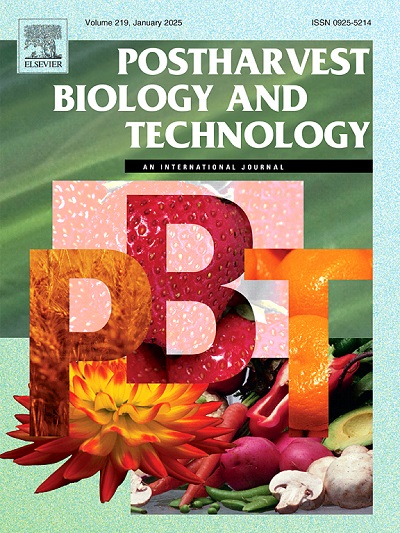Utilizing RGB imaging and machine learning for freshness level determination of green bell pepper (Capsicum annuum L.) throughout its shelf-life
IF 6.4
1区 农林科学
Q1 AGRONOMY
引用次数: 0
Abstract
This study investigates the sensory qualities, weight loss and texture changes in green bell peppers as indicator of freshness during storage. It assesses the feasibility of using machine learning methods to monitor freshness changes in the commercial variety ‘Kyohikari’ over a 16-d storage period at + 5 °C and 95 % relative humidity (RH). Throughout the storage period, the commercial variety of green bell peppers were stored, and RGB images were captured using a DSLR camera. Sensory assessments and measurements of texture, weight loss, chlorophyll, and carotenoids were conducted at various inteval. Several machine learning approaches- including logistic regression, neural networks, random forests, k-nearest neighbors, and support vector machines, were employed to develop classification and prediction models for fruit freshness during storage intervals of 0, 4, 6, 8, 10, 12, 14, and 16 d. The results indicate that hue angle and chlorophyll content remained unchanged throughout the experiment. However, after 10 d of storage, a 3 % weight loss was observed, accompanied by the detection of off-odors and off-flavors, marking the limit of marketability. The models demonstrated exceptional accuracy in classifying and predicting the freshness of green bell peppers on the storage day, achieving 100 % accuracy with the neural network algorithm.
求助全文
约1分钟内获得全文
求助全文
来源期刊

Postharvest Biology and Technology
农林科学-农艺学
CiteScore
12.00
自引率
11.40%
发文量
309
审稿时长
38 days
期刊介绍:
The journal is devoted exclusively to the publication of original papers, review articles and frontiers articles on biological and technological postharvest research. This includes the areas of postharvest storage, treatments and underpinning mechanisms, quality evaluation, packaging, handling and distribution of fresh horticultural crops including fruit, vegetables, flowers and nuts, but excluding grains, seeds and forages.
Papers reporting novel insights from fundamental and interdisciplinary research will be particularly encouraged. These disciplines include systems biology, bioinformatics, entomology, plant physiology, plant pathology, (bio)chemistry, engineering, modelling, and technologies for nondestructive testing.
Manuscripts on fresh food crops that will be further processed after postharvest storage, or on food processes beyond refrigeration, packaging and minimal processing will not be considered.
 求助内容:
求助内容: 应助结果提醒方式:
应助结果提醒方式:


